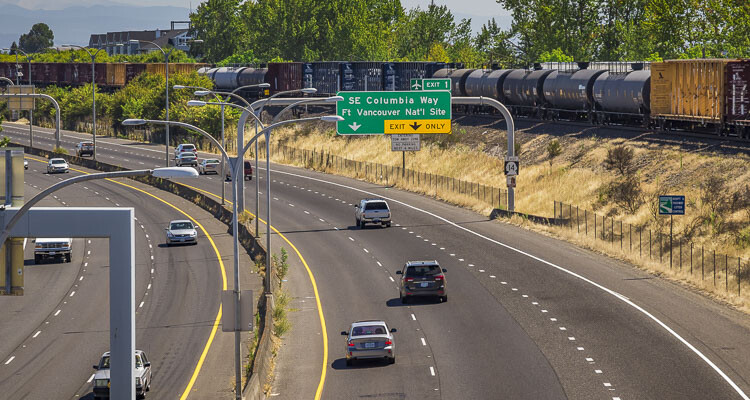
The projected revenue drop for the 10-year outlook fell $633 million compared to projections made just six months ago
Timothy Schumann
The Center Square Washington
Washington transportation funding is facing a revenue decline worth hundreds of millions of dollars, according to the most recent fiscal projections presented to the Washington State Transportation Commission.
Deputy Director Carl See shared details of the lowered revenue expectations, showing a theme of figures in red. In his overview, the projected revenue drop for the ten year outlook fell $633 million compared to projections made just 6 months ago in November of 2022.
According to See, the downward revisions are “largely being driven by lower motor vehicle fuel tax revenues.” This could be explained by increased electric vehicle adoption, which has caused some members of the state Legislature to advocate for a road usage tax based on miles driven, as opposed to a fuel tax.
It’s not just the long term numbers that are on the downswing, numbers for the upcoming two bienniums are also in the red.
In the current 2021-2023 biennium, transportation revenues totaled a projected $6.59 billion, with 52% of that coming from $3.39 billion in motor vehicle fuel taxes. Motor fuel revenue forecasts for the 2021-2023 and 2023-2025 biennium dropped $48.8 million and $135.1 million respectively.
Totaling 27%, or $1.78 billion, “Licenses, Permits, and Fees” also declined. The category was down $8.85 million and $1.38 million for the 2021-2023 and 2023-2025 bienniums respectively.
With almost 80% of revenues accounted for in those two categories, revenue numbers begin to fall off sharply.
Clustered in a group around 5% each of total revenues are Tolls, Ferries, and Driver Fees, coming in at $392 million, $349 million, and $329 million respectively. Closing out the revenue sources were the miscellaneous “other” category for $225 million, and the Vehicle Sales Tax at $127 million.
That final and smallest slice of the pie was one of the few bright spots revised upward in this revised forecast of transportation revenues. The Vehicle Sales Tax portion of the forecast was increased by 0.51% and 0.66% for the 2021-2023 and 2023-2025 bienniums respectively, totaling around $1.5 million over the 4 year period.
The 2023-2025 biennium general fund bore the brunt of this reduction in revenue forecasts decreasing by $407.1 million. However, It should be noted that while this number seems large, it is only 0.6% of the total budget for the two year period.
A worrying trend in the report saw every one of the last four revenue projections revised downwards, with the ten year forecast covering 2022-2031 dropping from a high of $37 billion in June of 2022 down to just over $36 billion in March of 2023.
The report ended on a brighter note, showcasing General Fund revenue which comes from a variety of sources including “retail sales and use, property, business and occupation, real estate, public utility, cigarette and tobacco taxes, and insurance premiums.”
For the 2021-2023 biennium the actual collections numbers for that general fund were higher than forecast in November of 2022, increasing by $198.6 million.
This report was first published by The Center Square Washington.
Also read:
- Opinion: Hiding the growing cost of the Interstate Bridge replacementJoe Cortright of the City Observatory addresses the rising cost of the Interstate 5 Bridge replacement project.
- 90 minutes of delay on Southbound I-5 in Southwest Washington on Friday afternoon, July 26Travelers using southbound Interstate 5 through Woodland should expect up to 90 minutes of delay during Friday afternoon and evening and should delay travel or prepare for additional travel time.
- Nighttime paving work on I-5 and SR 14 in Clark County July 28-Aug. 9Nighttime travelers in Clark County should expect delays for maintenance and paving work beginning Sunday, July 28 until the morning of Friday, Aug. 9.
- Northeast 182nd Avenue/Northeast Ward Road to be closed on Aug. 1Northeast 182nd Avenue and Northeast 172nd Avenue in Clark County will have single-day closures on August 1 and August 5 for road preservation, with detours in place.
- Interstate Bridge Replacement program awarded $1.499 billion FHWA Bridge Investment Program grantInterstate Bridge Replacement program officials have shared that the program received $1.499 billion through the Federal Highway Administration’s Bridge Investment Program.









